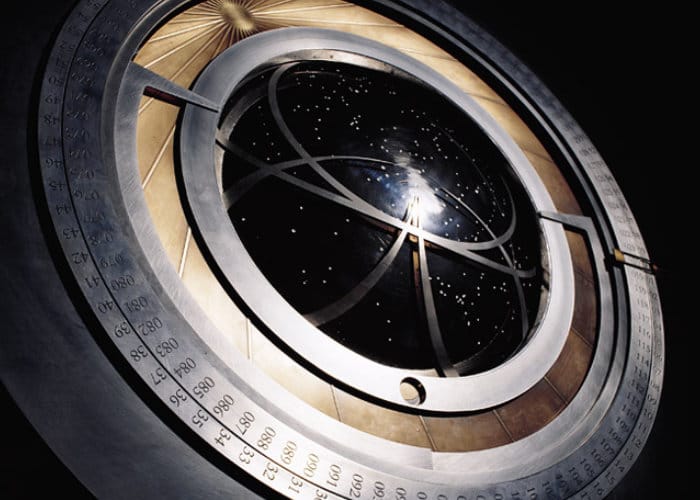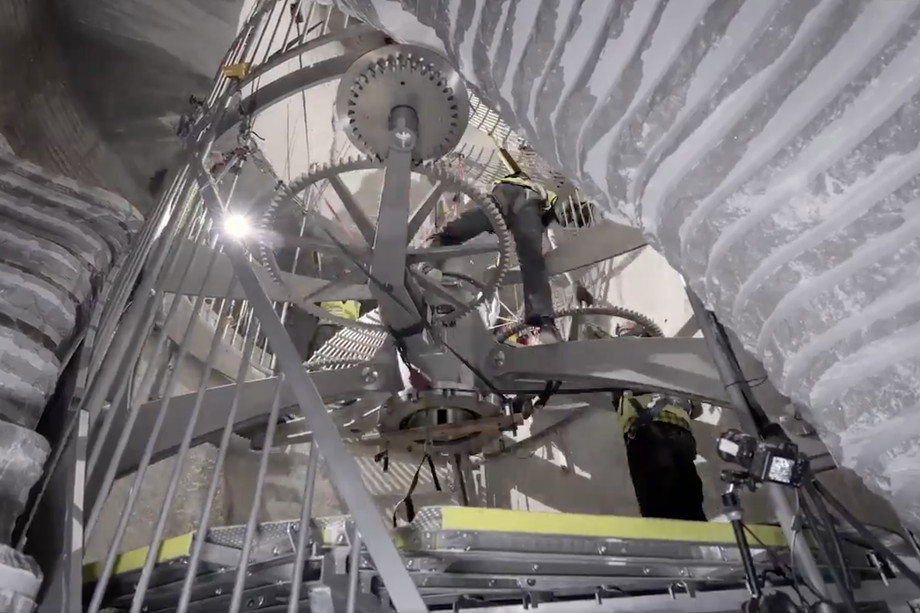
A prototype of the 10,000 year clock. Image: The Long Now Foundation (photo by photo by Rolfe Horn)
Time keeping machines aren’t always built to last, but some do manage to stand the test of time. The Cronulla Clock Tower houses a clock that’s almost 250 years old, for example; the clock in England’s Salisbury Cathedral is still ticking 630 years after it was built.
But there’s a group of people aiming to put these clocks to shame. Buried deep into a mountain in the United States desert, there’s a clock that should keep ticking for 10,000 years.
It takes a lot of engineering to keep time for ten millennia. For one thing, you will need a source of power that will always be available. This clock uses a power source we can be sure will always be around – changes in temperature. It’s powered by mechanical energy harvested from sunlight as well as the people that visit it.
Every day, as the environment warms up, special parts of the clock expand. Every night they shrink again as the air cools. This movement is enough to keep the timekeeper ticking.

The 10,000 year clock has a lot of moving parts. The Long Now Foundation
The team behind the clock’s design has also spent a lot of time thinking about rust. There are some metals that don’t rust, such as gold, but they also tend to be very valuable. So to deter thieves, the gears are made of stainless steel. Over 10,000 years, this material will no doubt still rust a bit, so the gears are built with some wiggle room between them. That way, a small amount of rust won’t gum up the works.
There are other surprising challenges that other short-lived machines don’t have to worry about. When two pieces of metal are touching for many years, they can become stuck together. This could be a catastrophe for slow moving gears. So some moving parts in the clock are made of stone or ceramic materials.
The 10,000 year clock has been under construction for many years. Recently, the team have started installing the clock into its purpose built home – an underground chamber drilled into the heart of a mountain in Texas.
We will all be long dead before this remarkable clock marks its 10th millennium. Will it still be ticking? We can only hope.
Funnily enough Anton Hassel who has designed and made the bells for this clock also worked on a bell project with one of our artists in residence recently.
This story originally appeared in our fortnightly Double Helix Extra newsletter. If you like what you’ve just read, why not subscribe?
Our science magazine for kids
Looking for science, technology, engineering and maths news? We've got you covered! Inside every issue you'll find articles, activities, puzzles, comics and prizes galore.


Pingback: A clock that will still tick in 10 millennia « Balani Infotech Pvt. Ltd.